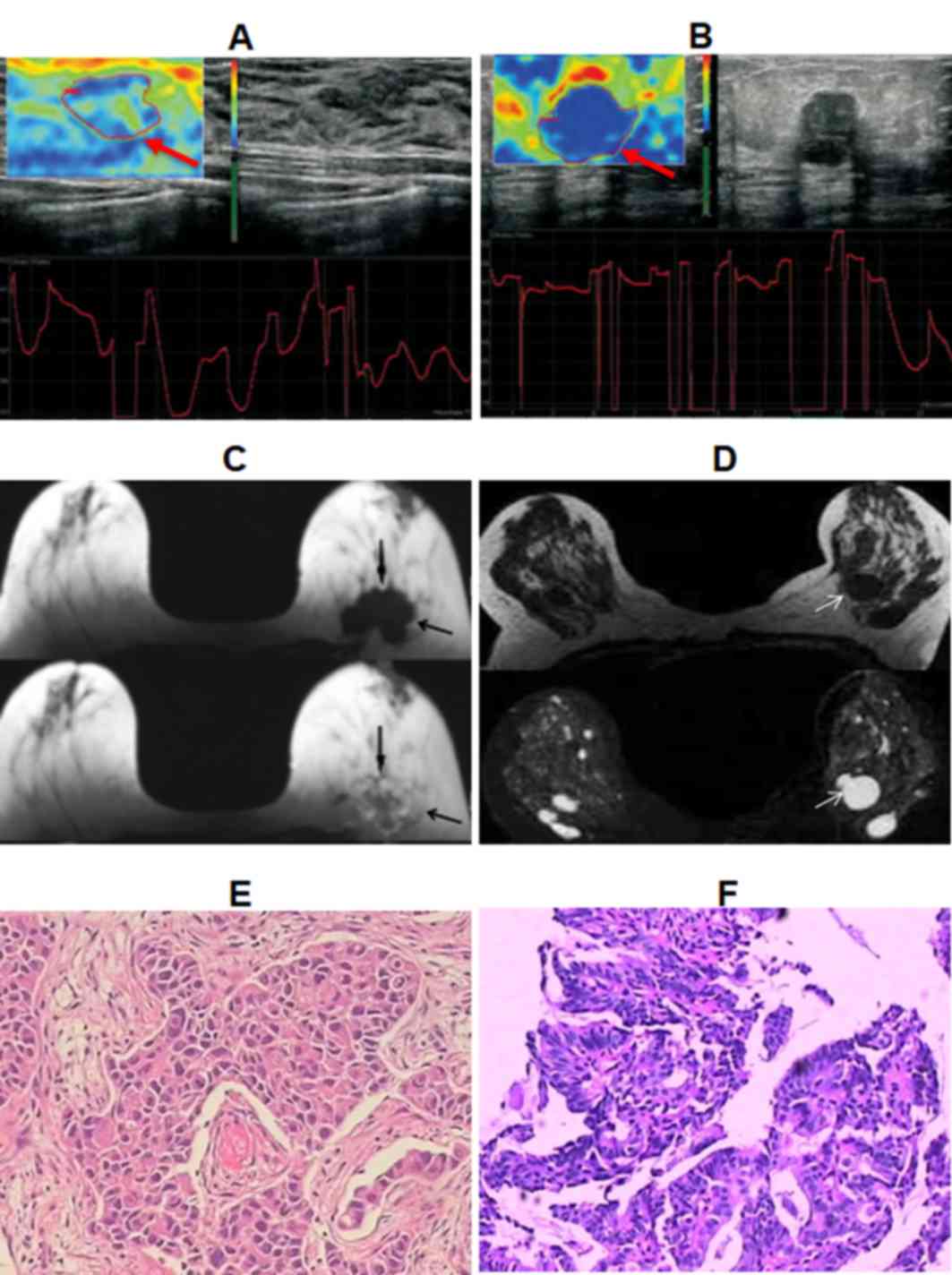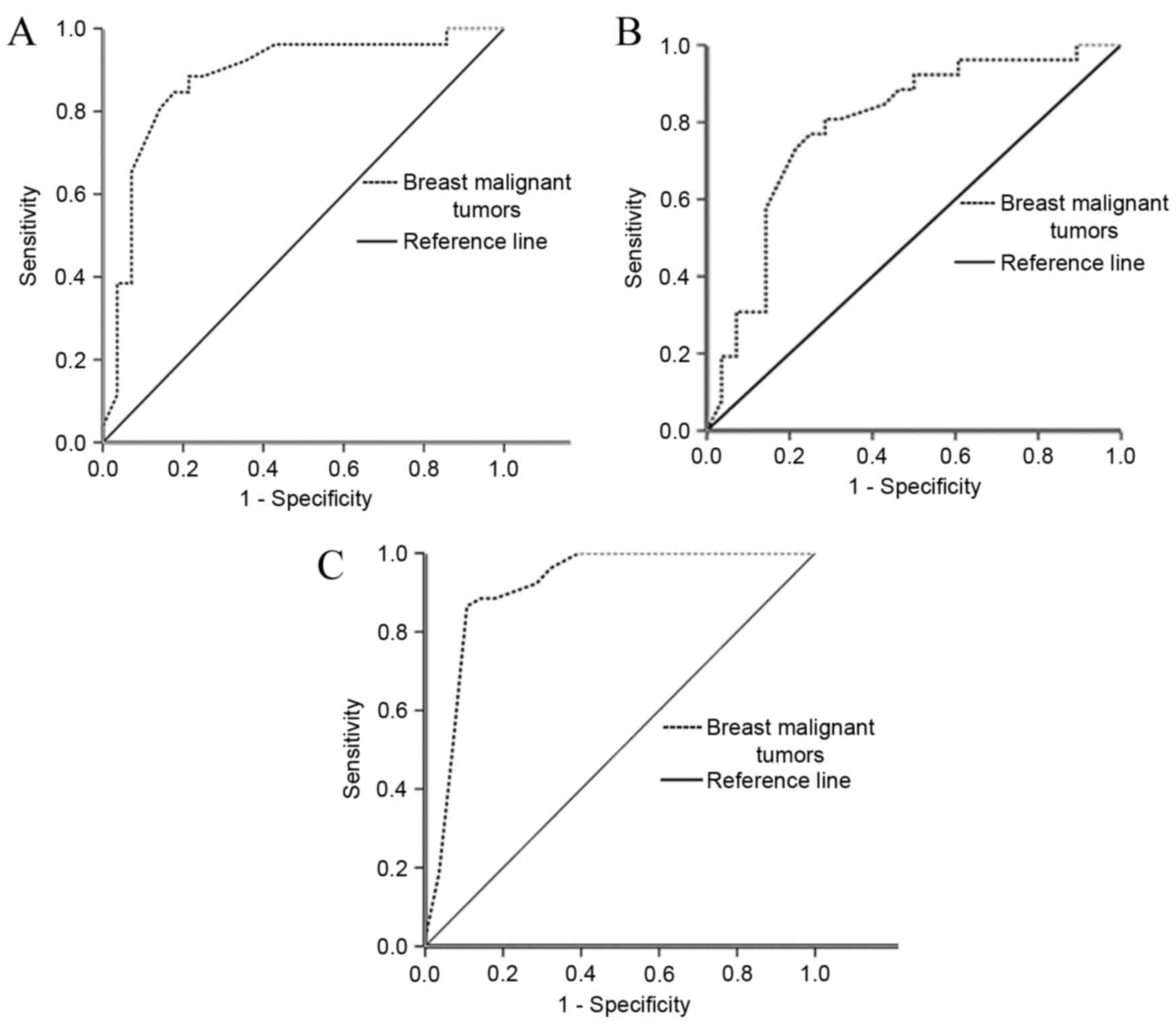Comparison of the diagnostic efficacy between ultrasound elastography and magnetic resonance imaging for breast masses
- Authors:
- Published online on: December 22, 2017 https://doi.org/10.3892/etm.2017.5674
- Pages: 2519-2524
Metrics: Total
Views: 0 (Spandidos Publications: | PMC Statistics: )
Total PDF Downloads: 0 (Spandidos Publications: | PMC Statistics: )
Abstract
The present study compared the efficacy of ultrasound elastography (UE), magnetic resonance imaging (MRI) and the combination of the two methods (UE+MRI) in the differential diagnosis of benign and malignant breast tumors. In total, 86 patients with breast masses were recruited and evaluated by UE, MRI and UE+MRI. Strain ratios of UE were calculated for the breast mass and adjacent normal tissues. In addition, the receiver operating characteristic (ROC) curve was obtained, while the sensitivity and specificity were calculated to determine the optimal cut‑off point for the differential diagnosis. The area under the ROC curve (AUC) was also calculated to evaluate the diagnostic performance of these methods. The results indicated that the diagnostic accuracy of UE+MRI was significantly higher compared with the UE or MRI methods in the differential diagnosis of invasive ductal, invasive lobular, intraductal papillary, medullary and mucinous carcinomas (all P<0.05). The optimal cut‑off points of ROC curve of the Strain Ratio in the diagnosis of breast lesions were 2.81, 3.76 and 3.42 for UE, MRI and UE+MRI, respectively. Furthermore, the AUC values were 86.7, 79.2 and 91.4%, while the diagnostic accuracy rates were 82.5, 75.5 and 95.3%, for UE, MRI and UE+MRI, respectively. Accuracy rate differences between UE and MRI or between UE and UE+MRI were statistically significant (P<0.05), whereas no significant difference existed between MRI and UE+MRI (P>0.05). Finally, the diagnostic consistency of the UE+MRI method with the pathological diagnosis was higher compared with UE or MRI alone. In conclusion, the combination of UE and MRI is superior to the use of UE or MRI alone in the differential diagnosis of benign and malignant breast masses.











